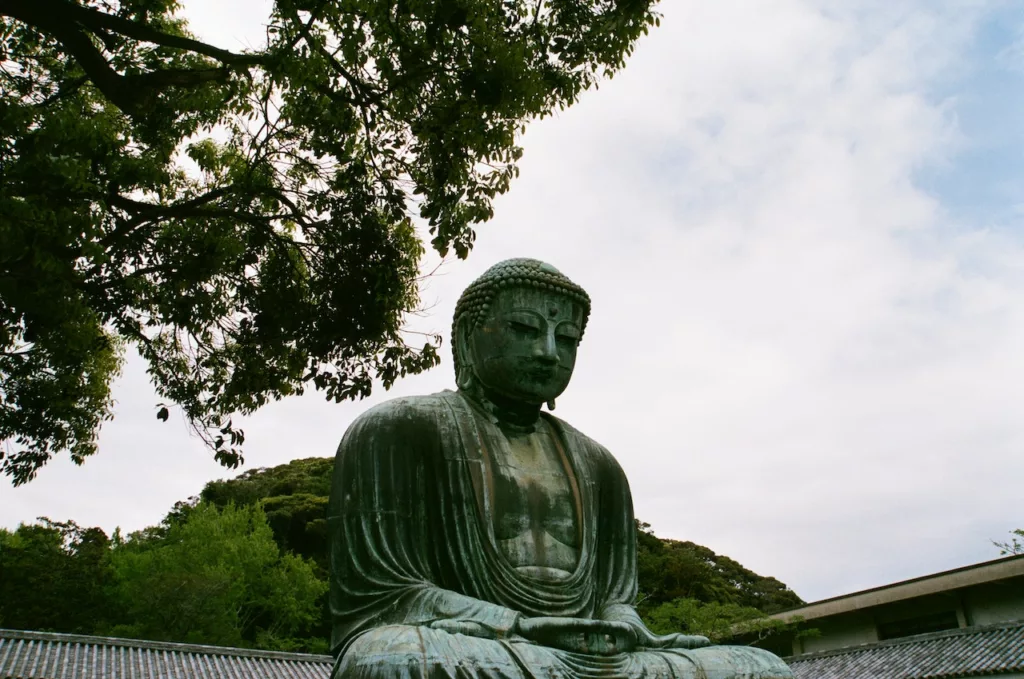Mindfulness Practices in Buddhism: A Path to Enlightenment

Have you ever found yourself lost in a whirlwind of thoughts, unable to focus on the task at hand? Or perhaps you’ve felt overwhelmed by your emotions, unsure of how to navigate through the storm? If so, you’re not alone. In our fast-paced, hyper-connected world, it’s all too easy to lose touch with the present moment. But what if there was a way to reclaim our attention, to cultivate a sense of inner peace and clarity? Enter mindfulness, a cornerstone of Buddhist philosophy that offers a path to enlightenment. But what exactly is mindfulness in Buddhism, and how can we incorporate it into our daily lives? Let’s embark on a journey of discovery and delve into the heart of Buddhist mindfulness practices.
Understanding Mindfulness in Buddhism
So, what is mindfulness in Buddhism? In its simplest form, mindfulness is a state of being fully present and engaged in the current moment, without judgment or distraction. It’s about observing our thoughts, feelings, and sensations as they arise, without getting swept away by them. But mindfulness in Buddhism goes beyond mere observation—it’s a form of active engagement with our experience, a way of relating to the world with openness, curiosity, and compassion.
In the Buddhist tradition, mindfulness is not just a meditation technique—it’s a way of life. It’s about cultivating a mindful awareness that permeates every aspect of our existence, from the mundane tasks of daily life to the deepest realms of spiritual practice. The beauty of mindfulness is that it’s accessible to everyone, regardless of religious belief or life circumstance. All it takes is a willingness to pay attention, to tune in to the here and now.
Historical Context of Mindfulness in Buddhism
Mindfulness isn’t a new-age fad—it’s a practice rooted in the ancient teachings of Buddhism. Over 2,500 years ago, the Buddha himself emphasized the importance of mindfulness in his teachings. He described it as the direct path to enlightenment, a key to unlocking the door to ultimate freedom and happiness.
One of the Buddha’s most famous discourses, the Satipatthana Sutta, provides detailed instructions on how to establish mindfulness. This text, often referred to as the “Discourse on the Establishing of Mindfulness,” is considered the foundational text for mindfulness meditation. It outlines four foundations of mindfulness: mindfulness of the body, feelings, mind, and phenomena. These four foundations serve as a roadmap for practitioners, guiding them on a path towards enlightenment.
Mindfulness Meditation Techniques in Buddhism
Buddhism offers a rich array of mindfulness meditation techniques, each with its unique approach and emphasis. Let’s take a closer look at some of these techniques:
- Anapanasati: This is mindfulness of breathing. It involves focusing on the breath, observing its natural rhythm, and using it as an anchor to the present moment. The breath serves as a bridge between the body and the mind, a tool for cultivating awareness and tranquility.
- Samatha: Also known as calming meditation, Samatha aims to quiet the mind and cultivate a sense of inner peace. It involves focusing on a single object of attention, such as the breath, a mantra, or a visual image, and gently returning the mind to this object whenever it wanders.
- Vipassana: This is insight meditation. It’s about developing a deep understanding of the nature of reality, including the impermanence of all things, the unsatisfactoriness of clinging, and the concept of ‘no-self’. Vipassana encourages a direct and experiential understanding of these truths, leading to wisdom and liberation.
- Zazen: A cornerstone of Zen Buddhism, Zazen is seated meditation that encourages a state of
alert and focused relaxation. It’s often practiced with the eyes open, and can involve various methods of concentration, from following the breath to just sitting in open awareness.
The Three Purposes of Mindfulness Meditation in Buddhism
In Buddhism, mindfulness meditation serves three overarching purposes:
- Knowing the mind: Mindfulness helps us understand our mental processes. It shines a light on our thoughts, emotions, and habitual patterns, revealing them for what they truly are. This self-knowledge is the first step towards transformation.
- Training the mind: Mindfulness cultivates positive qualities like concentration, compassion, and wisdom. It’s like a gym workout for the mind, strengthening our mental muscles and enhancing our capacity for happiness and well-being.
- Freeing the mind: Ultimately, mindfulness leads us towards liberation from suffering—a state known as Nirvana in Buddhism. By seeing through the illusions of the self and the world, we can break free from the chains of craving and aversion, experiencing a profound peace that transcends all understanding.
Mindfulness in Daily Life: A Buddhist Perspective
Mindfulness isn’t just for the meditation cushion—it’s meant to permeate every aspect of our lives. Whether we’re eating, walking, working, or even brushing our teeth, we can practice mindfulness. How? By paying full attention to what we’re doing, moment by moment, without judgment or distraction. It’s about being fully alive and present, not lost in thoughts about the past or the future.
Imagine you’re washing the dishes. Instead of rushing through the task or getting lost in your thoughts, you could turn it into a mindfulness practice. You could feel the warmth of the water, the slipperiness of the soap, the weight of the dishes in your hands. Try to listen to the sound of the water, the clink of the dishes, the rhythm of your breath. You could simply be there, fully, for the experience of washing the dishes. This is mindfulness in action.
The Impact of Mindfulness Practices on Mental Health
The benefits of mindfulness aren’t just spiritual—they’re also psychological. Over the past few decades, a growing body of research has shown that mindfulness-based interventions can help reduce stress, anxiety, and depression. These interventions, such as Mindfulness-Based Stress Reduction (MBSR) and Mindfulness-Based Cognitive Therapy (MBCT), combine traditional mindfulness practices with modern psychological insights, offering a holistic approach to mental health.
But how does mindfulness help? By training us to relate differently to our thoughts and emotions. Instead of getting caught up in our worries or fears, we learn to observe them with kindness and curiosity, recognizing that they’re transient mental events, not fixed realities. This shift in perspective can have a profound impact on our mental health, fostering resilience, well-being, and a sense of inner peace.
Common Misconceptions about Mindfulness in Buddhism
Despite its popularity, mindfulness is often misunderstood. Some people think it’s about emptying the mind or achieving a state of constant bliss. But in Buddhism, mindfulness is about seeing things as they are, not as we’d like them to be. It’s about embracing the full spectrum of human experience—the good, the bad, and everything in between.
Another common misconception is that mindfulness is a purely secular practice, divorced from its Buddhist roots. While it’s true that mindfulness can be practiced outside of a religious context, it’s important to remember that it’s deeply rooted in the Buddhist tradition, imbued with ethical and spiritual values. Mindfulness is not just about being present—it’s about being present in a way that’s compassionate, wise, and liberating.
Final Thoughts On Mindfulness In Buddhism
Mindfulness in Buddhism is a profound practice that can transform our lives in countless ways. It invites us to wake up, to tune in
, and to show up fully for each moment. Whether we’re savoring a cup of tea, navigating a difficult conversation, or sitting in meditation, mindfulness offers a path to greater clarity, peace, and wisdom.
So why not give it a try? Whether you’re new to mindfulness or a seasoned practitioner, there’s always more to discover on this path of awareness and compassion. Remember, the journey of a thousand miles begins with a single step—or in this case, a single breath.
In the words of the Buddha, “Do not dwell in the past, do not dream of the future, concentrate the mind on the present moment.” So, are you ready to embrace the power of now? Are you ready to embark on the path of mindfulness, to explore the rich landscape of your own mind, and to discover the treasures of wisdom and compassion that lie within? The door is open, and the path is waiting. All you need to do is take the first step.
And remember, mindfulness is not a destination—it’s a journey. It’s not about achieving a state of perfection, but about cultivating a spirit of openness, curiosity, and kindness. It’s about learning to dance with life, with all its ups and downs, joys and sorrows, triumphs and challenges. So let’s dance, shall we?
As we conclude this exploration of mindfulness in Buddhism, let’s take a moment to appreciate the beauty of this practice, the wisdom of the Buddha’s teachings, and the potential for transformation that lies within each one of us. May you find the path to enlightenment, and may you illuminate the way for others with your light. Happy journeying!






